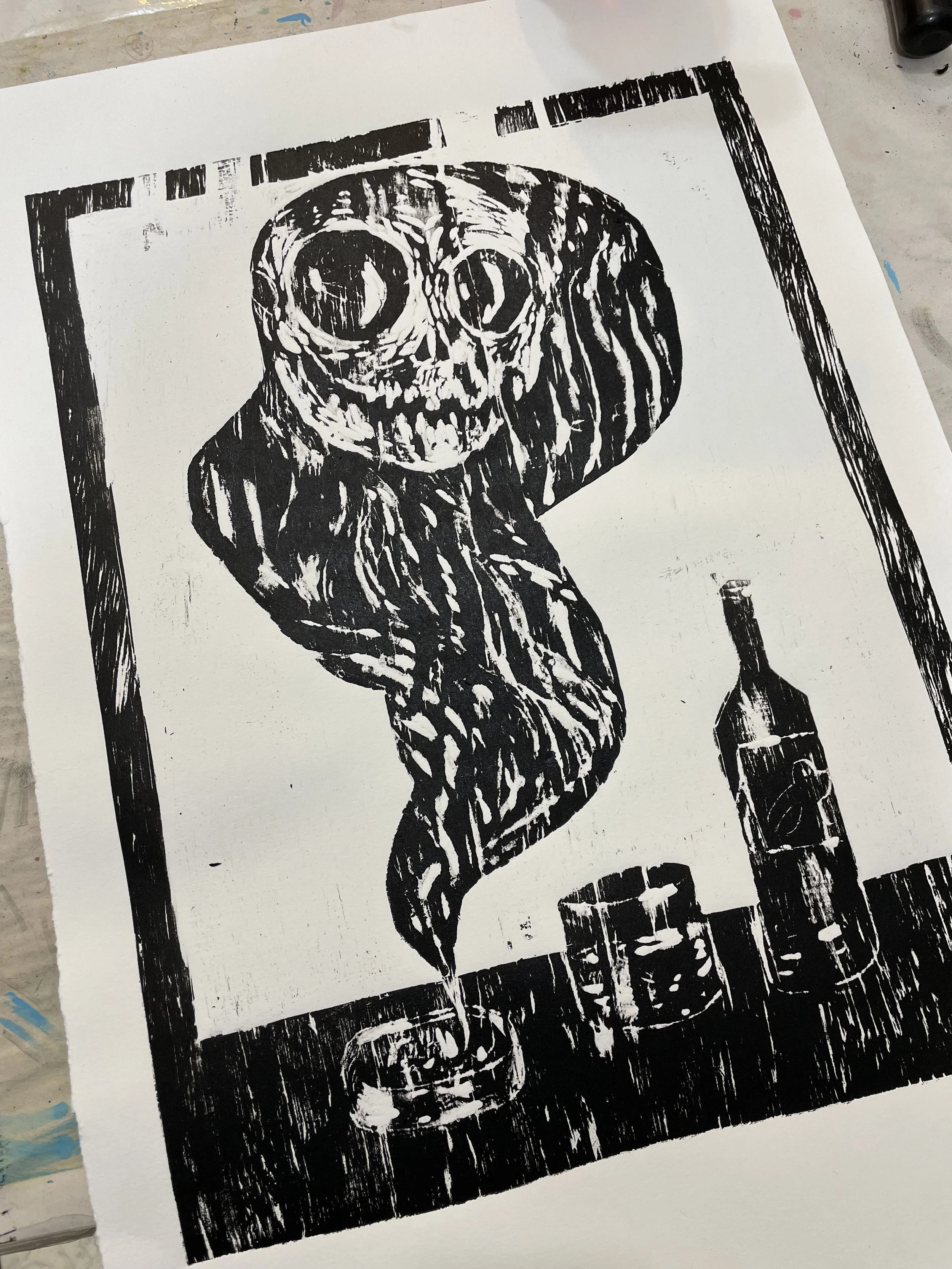Oaxacan Printmaking
Señor Muerte
I made this while traveling in Mexico, in Galeria Codigo Tonal, in Oaxaca. It is a relief print made with the oaxacan technique, using wood and fire and a lot of strength. Made in two days, while drinking mezcal (always recommended while using sharp objects), chatting and running out of the building due to an earthquake.
Oaxaca is the capital city of the Oaxaca state in southern Mexico, a place of cactuses, delicious food, and a strong political and indigenous heritage. It is the land of the Zapotecs, and there are still native members of this culture, attempting to keep their language, religion, and customs alive.
The whole city is vibrant with art in every corner, and one of the love affairs of my life seems to come to life here, relief printmaking.
Going to Mexico, I was aware that they had a great printmaking culture, and I found it in Oaxaca, with the streets filled with giant, intricate Linocuts. For those not familiar with the technique, they might not realize the amount of time and physical effort the creation of these pieces takes, I was in awe at the abundance of talent in the street. Street art linocut, I’m taking notes.
I was strolling in the street when I found a poster advertising workshops, so I got in contact and asked if they taught any local technique. And that’s how I learned Xilogravura Oaxaqueña, using wood and fire and a lot of strength. Made in two days, while drinking mezcal (always recommended when using sharp objects), chatting and running out of the building due to an earthquake.
This print is called Señor Muerte, and it’s inspired by the days I was spending in Mexico, and their relationship to death and mysticism. The people here have been representing skulls and death for a long time. I could tell the influences and evolution of this symbol while visiting Chitchen Itza and comparing it to the charicatural and quirky skeletons I saw in the streets, constant leftovers of the famous Día de Los Muertos.
Turns out it was actually José Guadalupe Posada Aguilar, a political lithographer and relief printmaker who created and popularized an early version of the skeleton we recognize and see all over Mexico today. A satirical cartoonist, he used skulls, calaveras, and bones to convey political and cultural critiques. Among his most enduring works is La Calavera Catrina. Catrina is now the most widespread image associated with Day of the Dead.
Learning this local technique that was brought here by Chinese immigrants and modified was really different from any printmaking I’ve ever done. I always associate cutting a surface with gentleness and patience and meditation, but these Mexicans got me sweating and stabbing and burning the wood. A different kind of meditation, to an extent. I had a blast.












